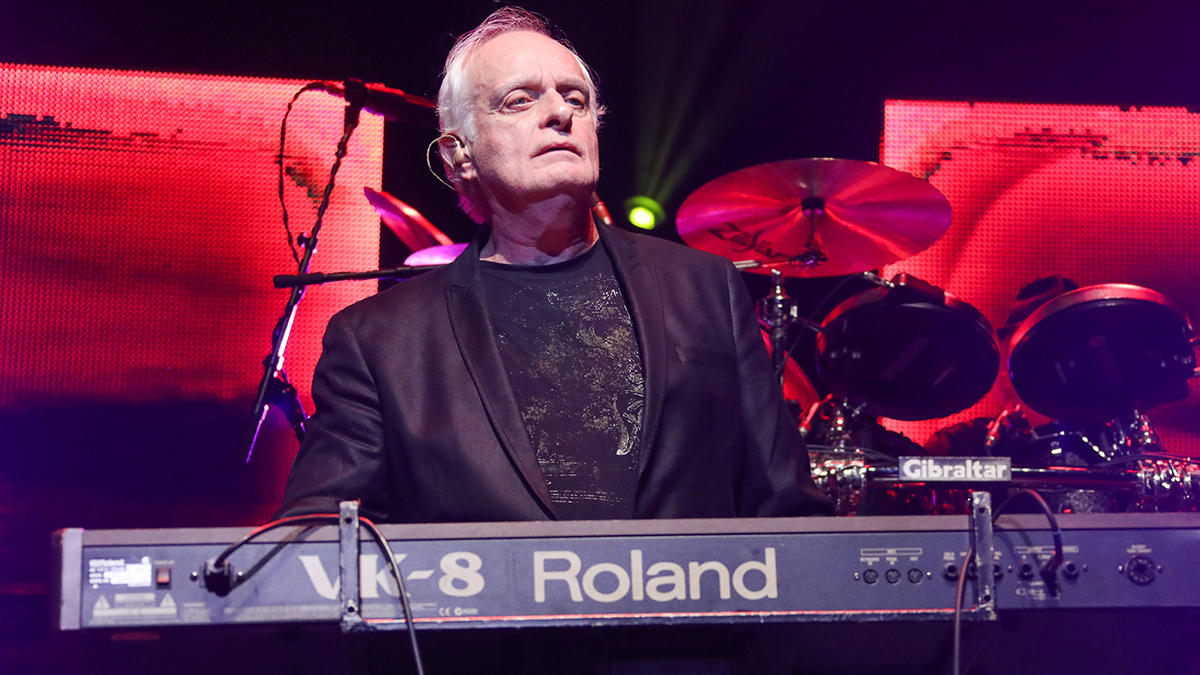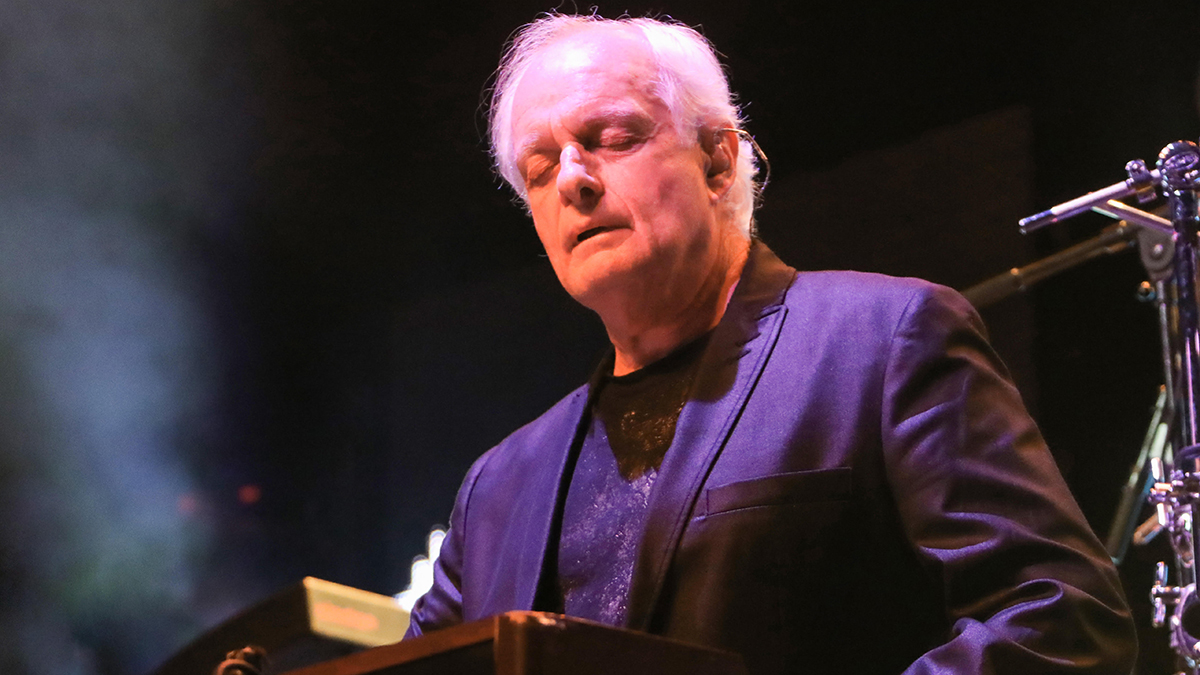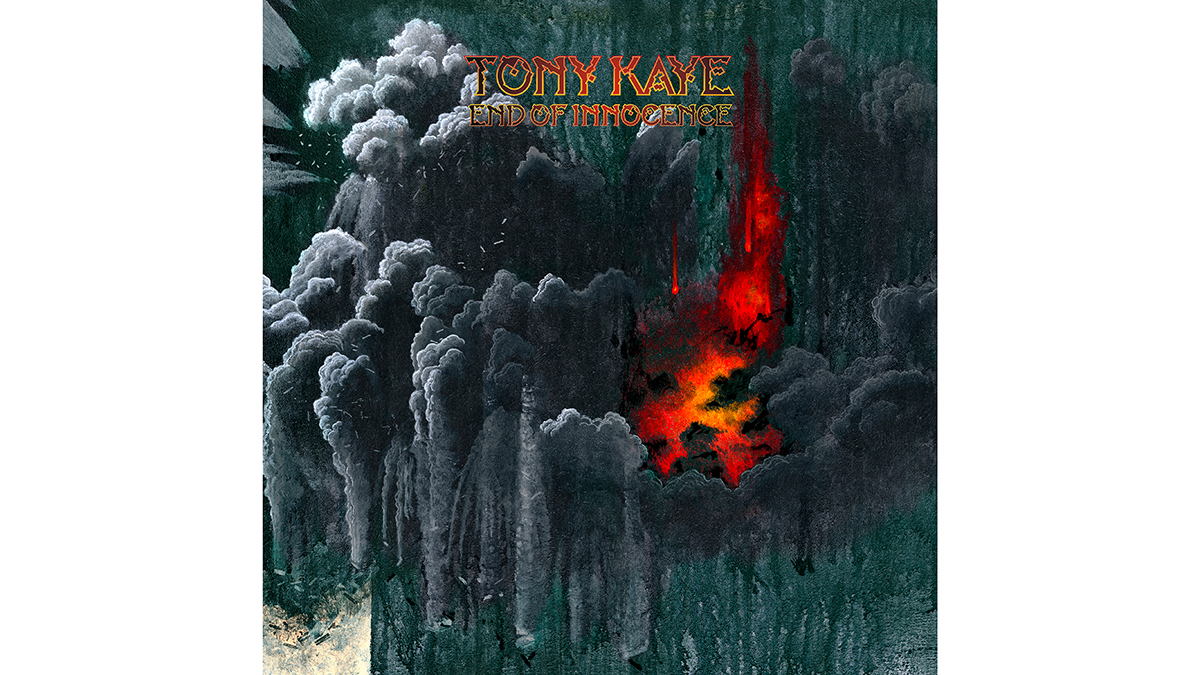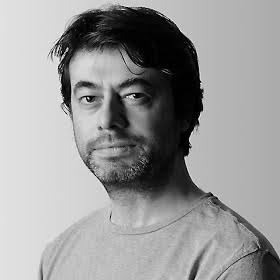Keyboard legend Tony Kaye: “I get asked if I left Yes because of my disdain for the ‘new’ electronic gear - the Moog and the Mellotron - and there’s a lot of truth in that”
Most famous for his early work with (and subsequent returns to) prog giants Yes, the Hammond maestro is back with an album to mark the 20th anniversary of 9/11

After famously leaving Yes due his desire to steadfastly stick to his Hammond, Kaye subsequently embraced the synth and went on to work with some of the biggest names in rock, making a triumphant return to Yes on their biggest album, 90125, in 1983.
Now, the original keyboard wizard returns with his first music since 1996. End of Innocence is an album 20 years in the making, inspired by the events of 9/11 and released on the 20th anniversary of that day.
We caught up with the English prog legend to discuss gear then and now, and what it was like writing, recording and touring with some of the biggest names in rock.
Your new album is inspired by the tragic events of 9/11. After stopping in 1996 you’re now making music again?
“Yes, it’s amazing how it transpired. Along with everyone else I watched what happened that day, and it made me go to the yard and take out my keyboards, which I hadn’t done for years.
“Largely, the album started out as a classical, orchestral thing. I went to the garage and started playing and there are three or four tracks that came out of that day - the day after 9/11.”
You’re famous for your piano and Hammond organ sounds and it’s great to hear these on the new album. You really went back to some old favourites.
Get the MusicRadar Newsletter
Want all the hottest music and gear news, reviews, deals, features and more, direct to your inbox? Sign up here.
“I did. They’re still my favourites. I love the Hammond and, of course, I had to get a little classical piano in there so the track Let’s Roll was my outlet for the piano.
There are so many interesting textures on the elements. Non-western textures, classical elements…
“It started out with old Yes tour equipment. All the modules MIDI’d together which I’d been using. Roland and Korg… In the beginning I put together whatever I had - I wasn’t very specific. I had a practice keyboard that I used to have on the road - just a cheap Casio. So it started off hap-hazzardly but really came together down the line.
“Most of the sounds I would say are from the [Roland] Fantom X7. I love that keyboard. It has such a range of sounds, orchestral sounds and non-western sounds. I got inspired by the flutes and pan flutes that are scattered on the album. It gave me the eastern sense that I wanted.”
What are you using to record these days?
“For the Yes album, Talk, I was working with Trevor Rabin and that was very much the start of us using Digital Performer for recording. For this album I transferred everything I’d done to Digital Performer.
“The song on the album, Sweetest Dreams, which my wife sang on, was actually recorded on an eight-track cassette. I transferred it, but I kept it as it was. I thought about re-recording some parts as the project went on but it was what it was and I found I didn’t want to change it.”

Let’s go back to the start. What first got you into playing keyboards?
“My grandmother was a classical pianist and I learnt classical piano til I was 15-16 years old. But my first real musical experience was with the Hammond, at my first real rock ‘n’ roll club.
“It was the first time I’d gone to see a band - The Graham Bond Organisation. Graham was a jazz organist [with Jack Bruce on bass and Ginger Baker on drums] and he was one of the first to crank the Hammond through a Leslie cabinet and turn it into a lead instrument. The track 285 Fulton Street on the End of Innocence album -which is a jazz/avant-garde crazy mish-mash - is a homage to Graham Bond.
“And then there were other organ players I saw when I first moved to London. Brian Auger, Keith Emerson, Jon Lord… Various people, all of whom were using Hammond.”
Your early big break was working with Yes, of course. What was it like writing, recording and performing back then?
“Well, the third album - the Yes album - that was the first album where we used multitrack. The first two albums were really just recorded live at a radio recording studio. They were recorded in a day. It was only when we were recording the third album that we started exploring more, with more sounds, and that continued even more with the albums Fragile and Close to the Edge. All with [Producer] Eddie Offord at the helm.
“But The Yes Album was a very special album. It was the beginning of the Yes ‘road’… And it was very nice to be able to play those songs again having played Yes’s 50th anniversary, which brought me back into the world of playing live and being together with Yes. For the first time I got some enthusiasm that I took to this new album.”
And you’re using new gear alongside your piano and Hammond?
“Something I get asked about is my leaving Yes because of my disdain for the ‘new’ electronic gear - the Moog and the Mellotron - and there’s a lot of truth in that. I did eventually use them in my work with Badger, but I was somewhat of a purist. I just loved the textures and the sound of the Hammond. The ‘new’ equipment didn’t really appeal to me. And, of course, it was all out of tune. So it was very difficult for me to get into.”
I was somewhat of a purist. I just loved the textures and the sound of the Hammond. The ‘new’ equipment didn’t really appeal to me. And, of course, it was all out of tune. So it was very difficult for me to get into.
After leaving Yes you moved to LA and worked with some great names.
“I moved to LA in 1975. We recorded the second Badger album in New Orleans and I loved America. I just wanted to live there. So I went back to the UK, sold up and moved to LA. And almost immediately got asked to join the Bowie tour - the Station to Station album. Of course that was an amazing opportunity. I had a great time with a great band on a great tour.”
How did you find those long world tours?
“It all comes down to getting on stage every night and playing. It’s the rest of it that can be a little daunting. I was glad to be out of that and I retired at the end of the ‘70s. Any musician will tell you that they miss performing on stage, that’s what we do, but I was just fed up with the whole business. It wasn’t just being out on the road. I wanted out.
“And then I bumped into Tommy from Badfinger and he brought me back. We were friends, so I played with them, but I’d retired even then. That’s when I first learned to play tennis. And it became a second life for me. And I got to compete and play and I had a great time. I didn’t miss anything.”
Then Yes came calling again? For the 90125 album?
“Well, that band started out as the group Cinema. It wasn’t a Yes project at all. We rehearsed the album for nine or ten months without Jon [Anderson].
“Originally Trevor Horn was the singer and he’d been in Yes before of course, but that didn’t quite work out. They were mostly Trevor Rabin’s songs and so he became the lead singer. It was mostly recorded apart from a couple of songs before Jon even joined.”

Turning Cinema into Yes can’t have been a decision that you all took lightly.
“There was a certain degree of corporate interference, shall we say. We were signed with Atlantic records - the band had always been with Atlantic - and it was a natural thing. Jon loved the album and did his thing at the end and the record company was ecstatic and persuaded us to change the name back to Yes.
“And thanks to Trevor Rabin it was a musical rebirth of Yes. Which - I have to say - that a lot of dedicated Yes fans didn’t really like! But it did bring in a whole lot of new fans and it was a great album. It paid homage to the band of the ‘70s but it had all that new music and, of course, it was a hit record. It was a great time for the band, it was a very popular tour and we all had a great time.”
And after Yes you retired… again?
“Well, Trevor [Rabin] and I left the band after the Talk tour in 1996 and I made no music. I just didn’t have a life. I had been on the road for a long, long time. It had been a great run, a great life and I enjoyed every minute of it but I really wanted to get back to doing nothing. And playing tennis.”
I really wanted to get back to doing nothing. And playing tennis.
The new album is your first music since then. How’s your home recording setup?
“Having a home studio has two aspects to it. There’s no doubt that when a band plays together and rehearses together and records an album together that it becomes something else. Recording separately as a band is not an optimal thing.
“But on a solo level I’m very happy with my recording setup and my keyboards. It’s a perfect thing. You can record whenever you want and, with Digital Performer, you have it all there and it sounds beautiful. I’ve never been much of a sound guy but this album was a chance to really learn how to record. It was a good thing.”
Do you have a favourite piece of gear? Something that you would never get rid of?
“Well, they’re not like guitars or saxophones or violins, you know. Keyboards are a little dispensable in that they’re upgraded all the time.
“I’ve got my Roland stuff and I love my Hammond soundalike, the Roland VK-8. I put that through the ventilator Leslie gizmo. For me that’s the best of all the soundalikes.
“Originally when Circa were playing live, right at the beginning I used it through a Leslie cabinet. A Leslie just goes together with a Hammond whether it’s a real Hammond or not. But they are a little impractical. So when the Ventilator came out… You’ve got the sound of the Leslie, you’ve got the rotors of the Leslie… the distortion… You can, if you mess around with it, get a decent Hammond sound. It’s not a real Hammond but I enjoy playing it and that’s what’s on this album.”
As someone who’s enjoyed a long and successful career - what advice would you give to anyone starting out?
“I’d tell them to join up with Jon Anderson! He seems to get these great young musicians out to play with him on stage. What a great thing to do. Young musicians need encouragement to pursue a career in music - especially rock music. I have a couple of friends that I try to inspire down the right path - get them into playing rock.”
A few people have said that the new album reminds them of Vangelis. I can see that and I’m a great fan.
And who do you personally find inspirational these days?
“Well, a few people have said that the new album reminds them of Vangelis. I can see that and I’m a great fan of Vangelis. I loved his work on Blade Runner, so I think I have a little influence from him. I got to see him live once and it was very inspirational.”
You’ve played with so many great people. Is there anyone you’d like to play with that you haven’t as yet?
“Yes. The Rolling Stones. I’ve got that blues thing in me! Right from the beginning. I’m not that great a blues piano player but I was certainly listening to that music. And I used to go see the Stones right at the beginning. When they played Eel Pie Island in London. I always wanted to play with the Stones. That would be the greatest thing.
So now you’re back to recording, and you’ve got your new album out, do you think you’ll continue?
“I think it’s a one off really. Just because of what it is. But who knows? Maybe next time, I’ll try something completely different.”
Tony Kaye’s debut solo album, End Of Innocence, is out now on Spirit Of Unicorn Music


Daniel Griffiths is a veteran journalist who has worked on some of the biggest entertainment, tech and home brands in the world. He's interviewed countless big names, and covered countless new releases in the fields of music, videogames, movies, tech, gadgets, home improvement, self build, interiors and garden design. He’s the ex-Editor of Future Music and ex-Group Editor-in-Chief of Electronic Musician, Guitarist, Guitar World, Computer Music and more. He renovates property and writes for MusicRadar.com.
"Reggae is more freeform than the blues. But more important, reggae is for everyone": Bob Marley and the Wailers' Catch a Fire, track-by-track
“Part of a beautiful American tradition”: A music theory expert explains the country roots of Beyoncé’s Texas Hold ‘Em, and why it also owes a debt to the blues










